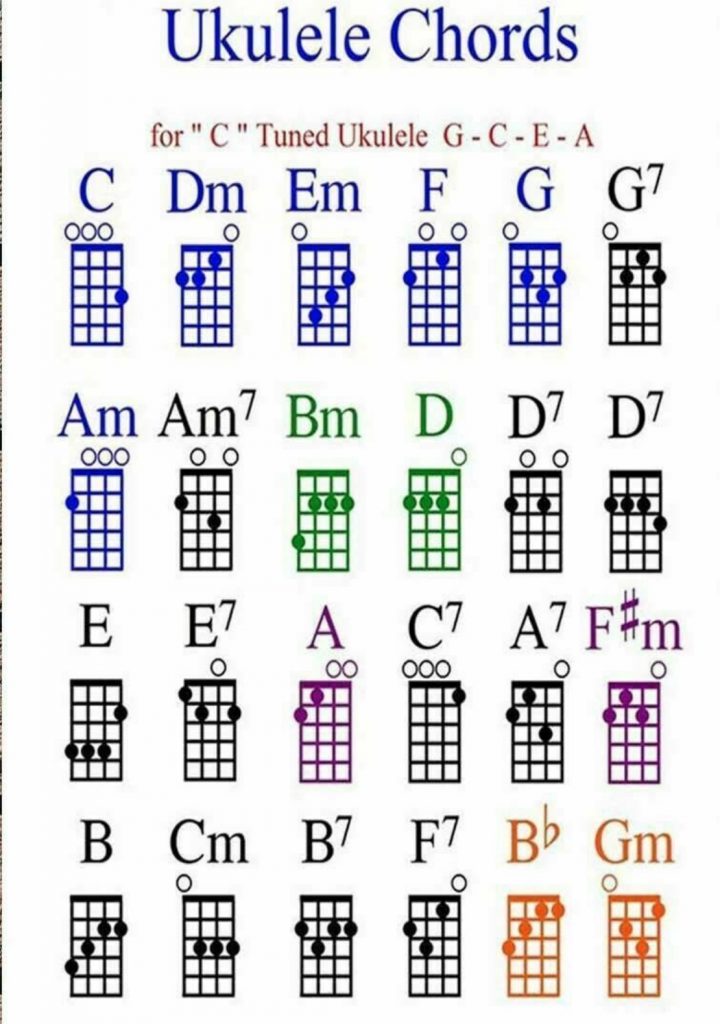Lesson Plan: Introduction to Ukulele Melodies
Objective: By the end of this lesson, learners will be able to create basic melodies on the Ukulele and understand the fundamentals of Ukulele playing.
Duration: 1 hour
Materials Needed:
- Ukuleles for each learner
- Whiteboard and markers
- Laptop/tablet with internet connection
- Projector and screen
- GuitarTuna and Metronome Beats app installed on devices
Introduction (15 minutes):
- History of the Ukulele (5 minutes): Discuss the origin and history of the Ukulele, emphasizing its cultural significance and evolution.
- Ukulele Introduction (5 minutes): Briefly introduce the Ukulele, explaining its size, strings, and sound. Show different types of Ukuleles if available.
- Parts of the Ukulele (5 minutes): Display a diagram of the Ukulele on the whiteboard and explain the different elements – headstock, tuners, neck, body, bridge, and strings.
Ukulele Basics (20 minutes):
- How to Tune the Ukulele (10 minutes): Demonstrate how to tune the Ukulele using an electronic tuner. Explain the standard tuning (G-C-E-A) and guide students through adjusting their Ukuleles.
- How to Hold the Ukulele (5 minutes): Teach proper Ukulele posture and hand positioning for comfortable playing. Ensure students are holding the Ukulele correctly.
- Introduction to GuitarTuna and Metronome Beats App (5 minutes): Show students how to use the GuitarTuna app to tune their Ukuleles accurately. Introduce the Metronome Beats app for practicing rhythms and beats.
Practical Exercise (20 minutes):
- Basic Chords and Strumming (10 minutes): Teach a few basic chords (C, G, Am, F) and simple strumming patterns. Guide students to practice transitioning between chords and strumming rhythmically.
- Creating Melodies (10 minutes): Explain the concept of melodies and demonstrate how to play a simple melody on the Ukulele. Provide sheet music or tabs for a beginner-friendly melody. Encourage students to practice playing the melody individually.
Closing (5 minutes):
- Q&A Session (3 minutes): Allow students to ask questions about Ukulele playing or any related topics covered during the lesson.
- Homework Assignment (2 minutes): Assign students a short melody to practice at home using the GuitarTuna app for tuning. Please encourage them to explore different themes and chord progressions.
Assessment:
Students will be assessed based on their ability to tune the Ukulele accurately, hold it correctly, play basic chords, follow strumming patterns, and create a simple melody.
Note: Adjust the difficulty level of the practical exercises based on the learners’ proficiency and progress during the lesson.
A Guide for Absolute Beginners

After watching the above video lesson, ask yourself if you need help understanding Justin’s class. With that in mind, Take it slow. You will get in there.
Title: “The Ukulele’s Indigenous Connection”
Scene: A Gathering by the Fire
Setting: A group of American Indigenous people has gathered around a crackling fire, and one of them is playing the ukulele while others listen with curiosity.
Narrator: Amid a starry night, a small group of American Indigenous people sat in a circle around a warm, crackling fire. Among them was a musician who held a ukulele, its strings glimmering in the firelight. As the musician played, the others watched, intrigued by this foreign instrument.
Scene: The Ukulele Player
The ukulele player’s skilled fingers danced over the strings, creating a melody that resonated with the spirits of the land. As they watched, one of the elders spoke up.
Elder: (In Native American language) Look at the player’s thumb, jumping from string to string like a flea.
Scene: The Naming
As the others observed the musician’s thumb, they noticed its quick and graceful movements, reminiscent of a flea. The elder continued to explain in their Native American language.
Elder: (In Native American language) We shall call this instrument “Ukulele,” for it dances like a jumping flea on the strings.
The rest of the group nodded in agreement, and the name “Ukulele” was born, forever connecting this enchanting instrument to the indigenous people who recognized its unique character.

That sounds like a fantastic approach to teaching music! Teaching students not only the classical styles but also empowering them to apply their knowledge to create new compositions and modify existing genres can be incredibly enriching. Exploring modes like Aeolian, Lydian, Phrygian, and Ionian will provide a strong foundation for musical understanding and creativity. Assessing learners before enrollment ensures that the lessons are tailored to their individual needs and goals, setting them up for a successful and fulfilling musical journey. Good luck with your teaching!